Even if you’ve visited other concentration camps before, visiting Belzec is a totally unique experience and one that stands out above all the rest in my mind. It’s not necessarily the easiest to get to or close to any major cities, but it’s definitely worth the trip.
This quick guide will tell you everything you need to know in order to plan your own visit to the Belzec extermination camp museum and memorial.
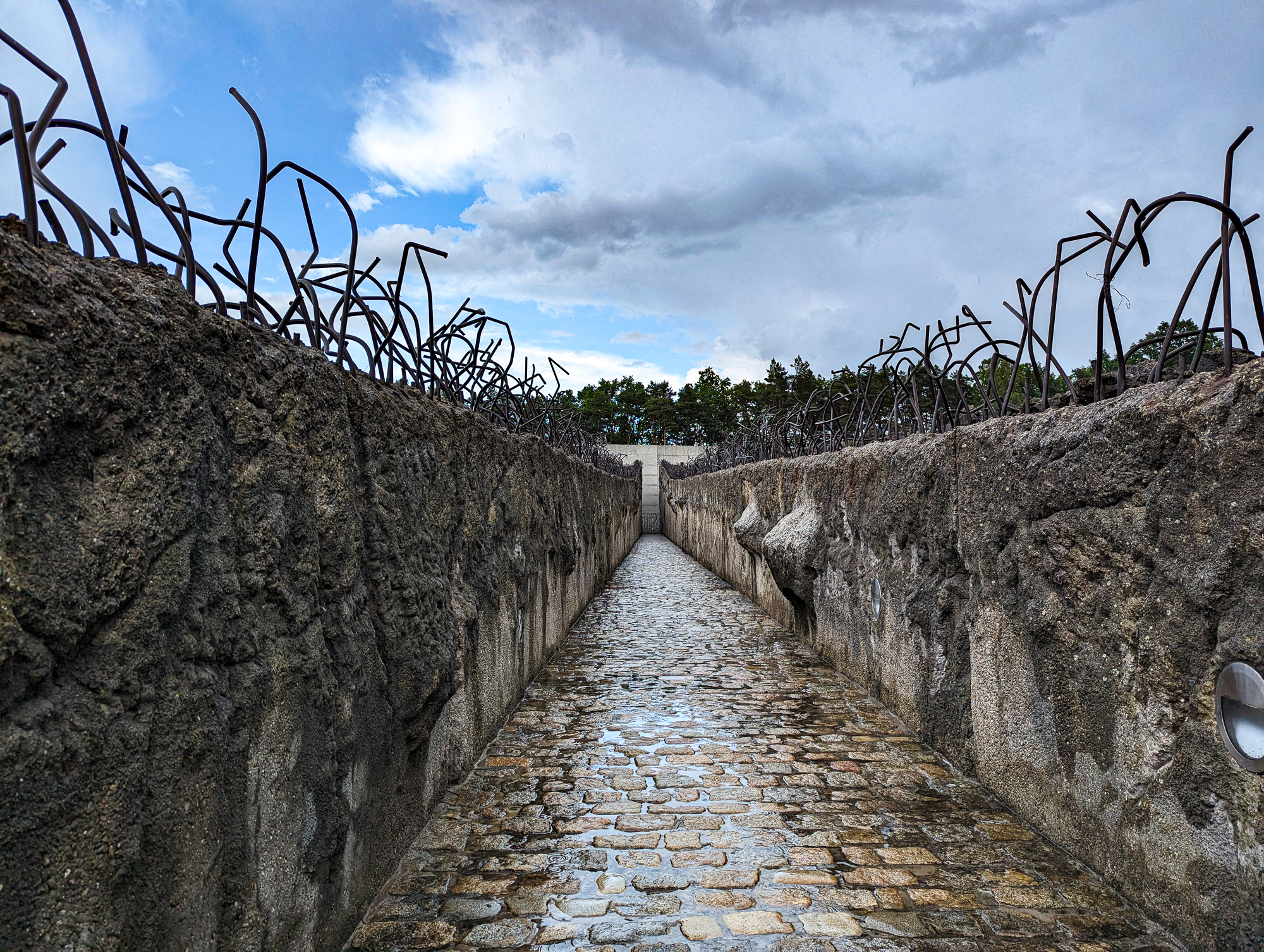
What is Belzec?
Along with Auschwitz, Chełmno, Majdanek, Sobibór, and Treblinka, Belzec was one of the six major Nazi death camps during the Holocaust. It was a killing center established specifically for the extermination of Polish Jews as part of Operation Reinhard and the “Final Solution to the Jewish Question.”
Read more about Reinhard Heydrich and his assassination in my article on visiting the Operation Anthropoid sites in Prague.
Belzec as a killing center
Open only from March to December 1942, the Nazis murdered (at least) 434,500 Jews in that short amount of time using gas chambers. The SS used Belzec largely to test out different methods of gassing to find the most efficient one. Their favorite was using the exhausts of large automotive engines to pump carbon monoxide gas directly into the gas chambers.
Most of the Jews killed at Belzec came from the Galicia, Kraków, and Lublin Districts of the “General Government”—the name for Nazi occupied Poland at the time. However, the SS also killed Austrian, Czech/Slovak, and German Jews sent here from other camps.
Belzec operated much like Auschwitz and the other extermination camps in that large freight trains would arrive packed with Jews. They would disembark the trains, be forced to strip naked and hand over all their belongings, then made to enter what they believed were “showers.” After the killings took place, Jewish Sonderkommandos removed the bodies and buried them in mass graves. The whole process would then repeat with the next group.
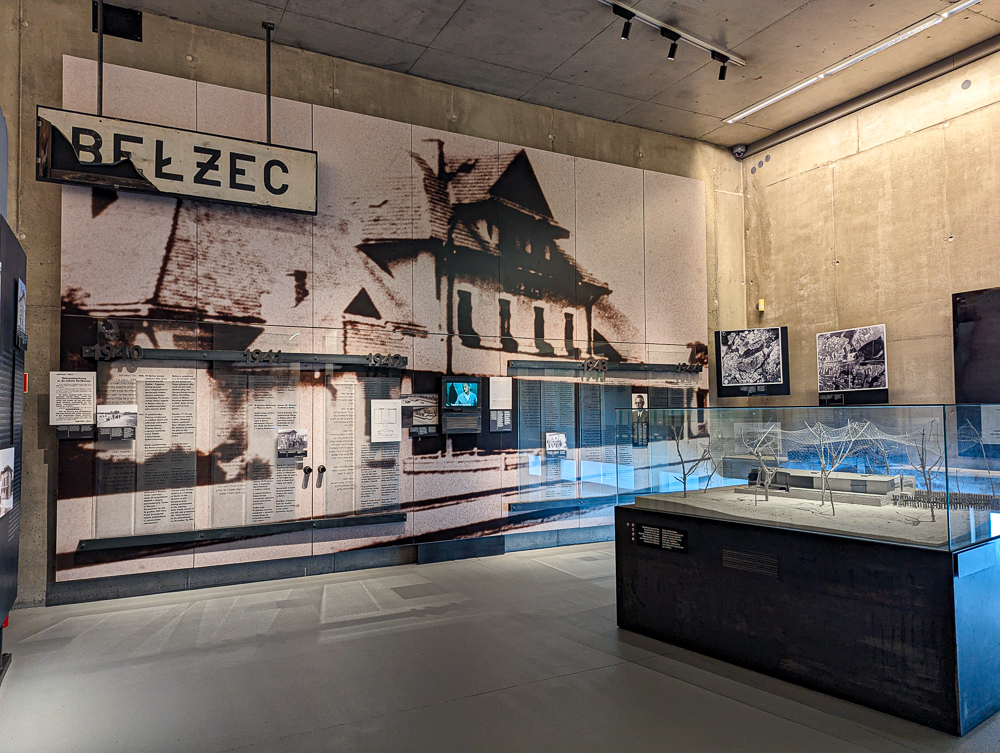
Hiding the evidence
After Belzec had served its purpose, the SS went about concealing any and all evidence of their crimes. They forced the Sonderkommandos to exhume the bodies from the mass graves and burn them in open-air pyres instead. By June 1943, all of the bodies had been disposed of, the buildings dismantled, and the remaining prisoners sent to Sobibór to die.
Then, they plowed over the site and planted fir trees and lupines. They built a farmhouse to disguise the area as if nothing out of the ordinary had ever taken place here. They even installed one of their guards to live here and pose as a farmer who literally farmed the land to keep up appearances. After the war, train records, other discovered documents, and survivor testimony helped uncover the truth.
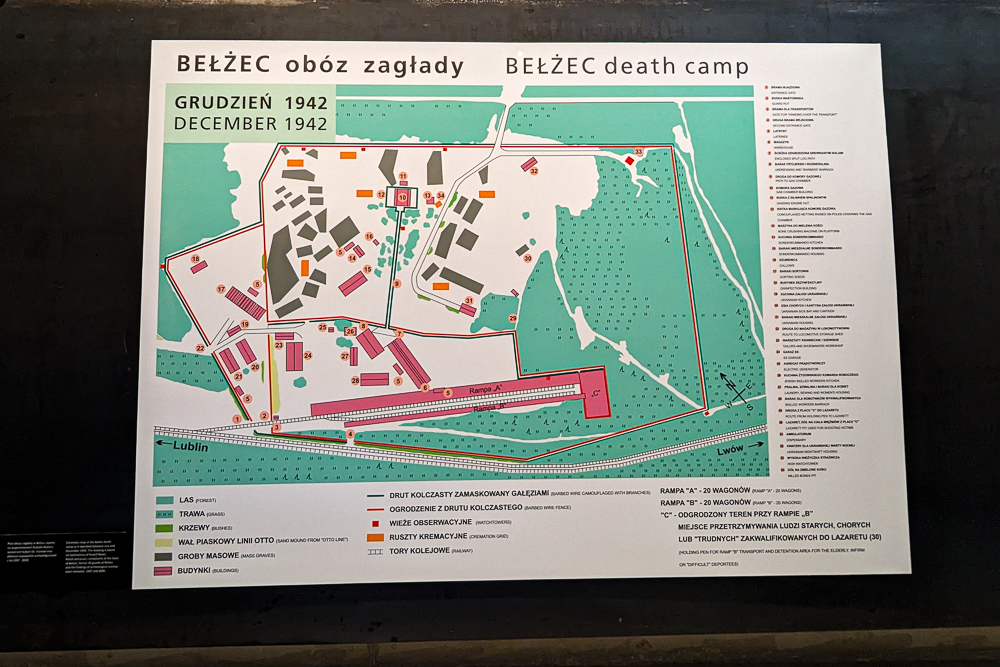
Belzec today
After the war, the location of the former Belzec camp was regularly plundered by grave robbers but otherwise was pretty seriously neglected. The area was eventually fenced off but, given its location on the Polish/Soviet border, few people ever visited it until 1989 and the collapse of the Soviet Union.
It wasn’t until the 1990s until real historical and scientific investigations began to uncover the truth of what happened here. And not until 2004 when the first monuments were erected, thanks to a partnership between the Polish Government and the United States Holocaust Memorial Museum—the work of Miles Lerman, chairman of the USHMM’s board, whose parents were killed at Belzec. Today, the site includes a visitor center and museum as well as an incredibly large monument and several memorials.
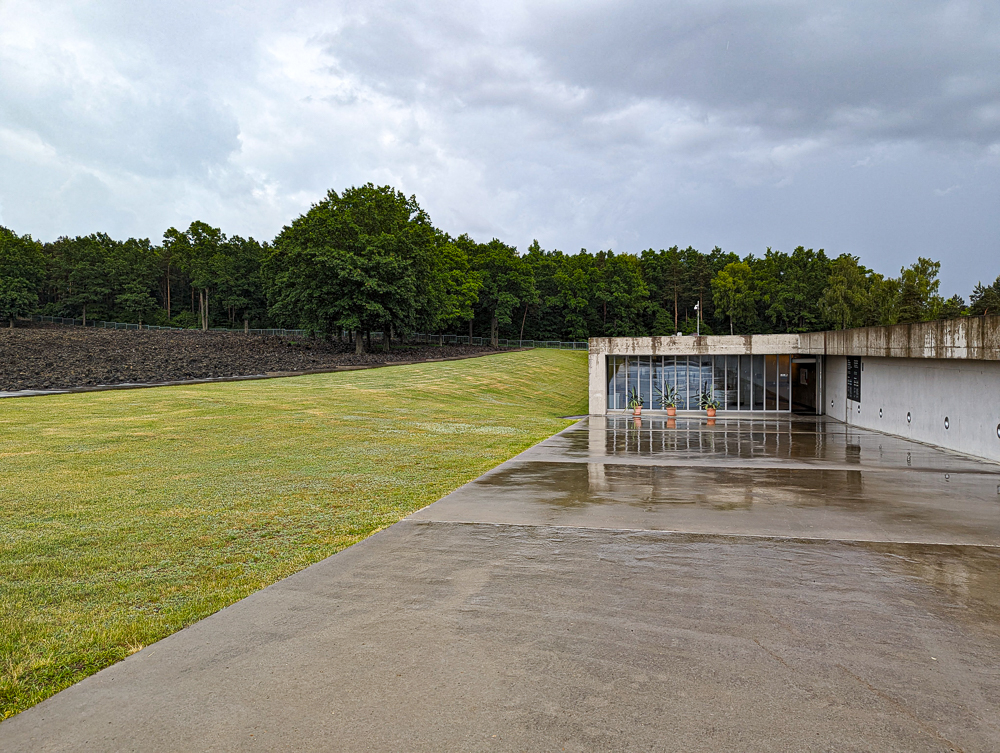
Why visit Belzec?
There isn’t as much “to see” at Belzec as there are at camps like Auschwitz, Majdanek, and Dachau (in terms of original structures, crematoria, etc.). But there is a lot to learn about here and even more to feel and experience.
I recommend visiting Belzec because something that stands out to me is how the camp was completely demolished and trees and flowers planted in its place as a coverup. This place and all traces of the nearly half million people who were brutally murdered here could easily have vanished from memory; I feel we owe it to them to learn their stories and what they endured.
I guess this is just my way of fighting back against the powers that built a farm here and literally installed a fake farmer to make sure their evil secrets stayed hidden. In other words, to bear witness. It’s really all that many of us can do but it’s also the most important reason for visiting Belzec and other concentration and extermination camps. They tried to cover it up, but we’re not going to let them get away with it.
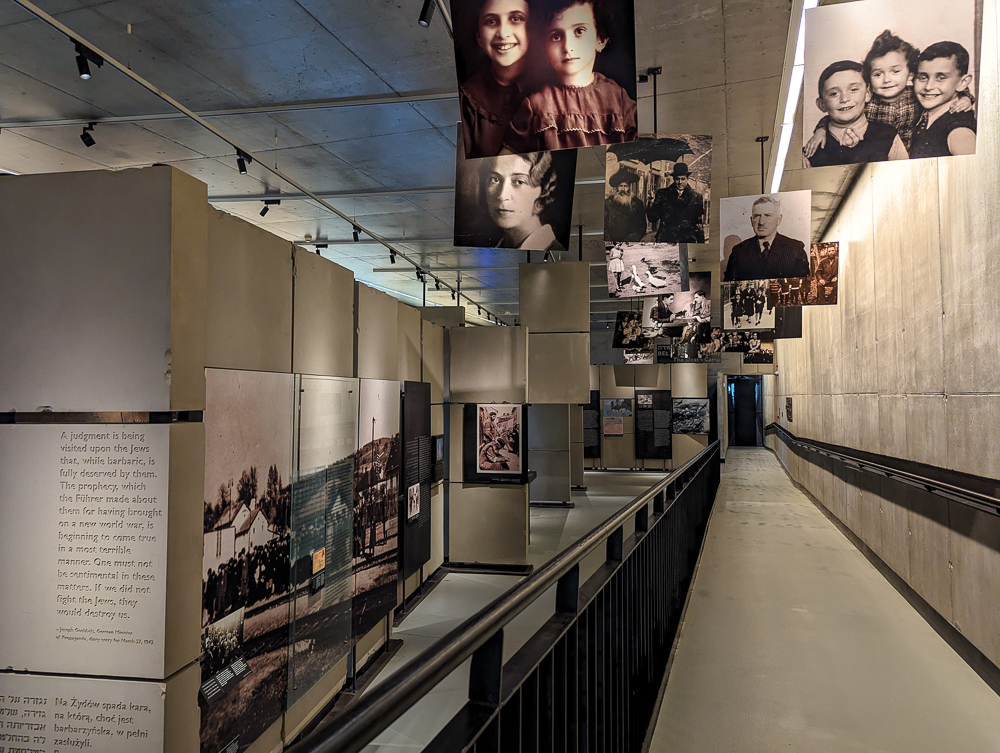
Where is Belzec extermination camp?
The Belzec Museum and Memorial is located in the town of Bełżec, on the Polish border with Ukraine. It’s about halfway between the cities of Lublin and Lviv.
How to get to Belzec
It’s not the most accessible historical site to visit, but please don’t let that dissuade you from visiting Belzec. The easiest way to get here is by car. (You can rent a car here if you need to.) The Belzec Museum and Memorial is a:
- 2-hour drive from Lublin
- 45-minute drive from Zamość
- 3.25-hour drive from Kraków
- 3.75-hour drive from Warsaw
- 1.5-hour drive from Lviv (Ukraine)
GPS address: Ofiar Obozu Zagłady 4, 22-670 Bełżec
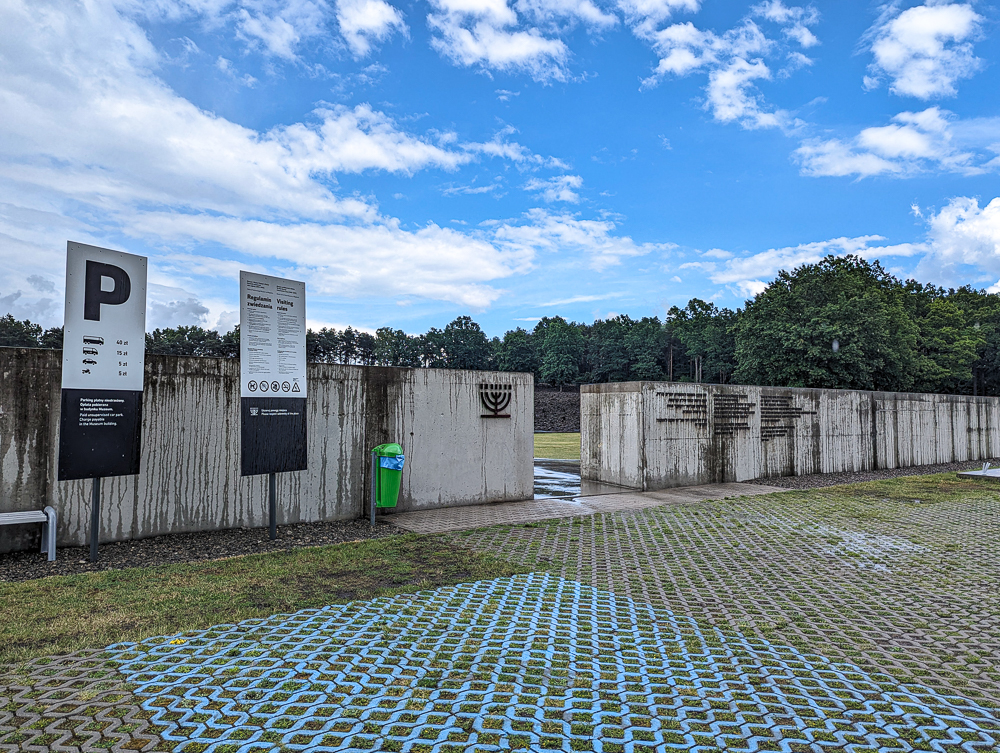
Once here, drive to the end of the road (Ofiar Obozu Zagłady), over the railroad tracks, until you reach the metal fence. Drive through the gate and this is the parking area for the museum and memorial site. Parking costs 5PLN (about $1.22US) and you can pay inside.
Walk through the gap in the concrete wall to enter. Turn right for the museum, or stay straight to visit the memorial.
Also read: Driving in Poland: What You Need to Know Before You Hit the Road
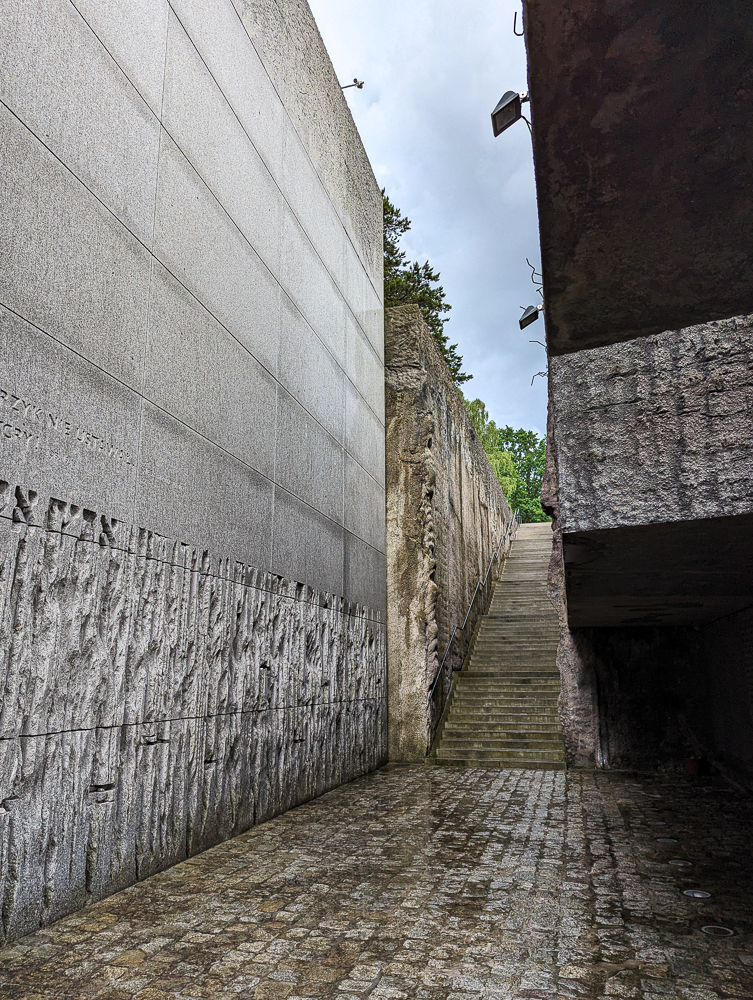
Visiting Belzec by tour
It’s also possible to visit the Belzec Museum & Memorial on a day trip from Lublin and other cities. I don’t have any personal experience with these companies, but if this interests you, here are a couple to check out:
- Poland Travel (from Lublin)
- Martin’s City Tours (from Lublin or Warsaw)
- KRK Kraków Tours (from Kraków)
See my full 2-week Poland WWII itinerary here.
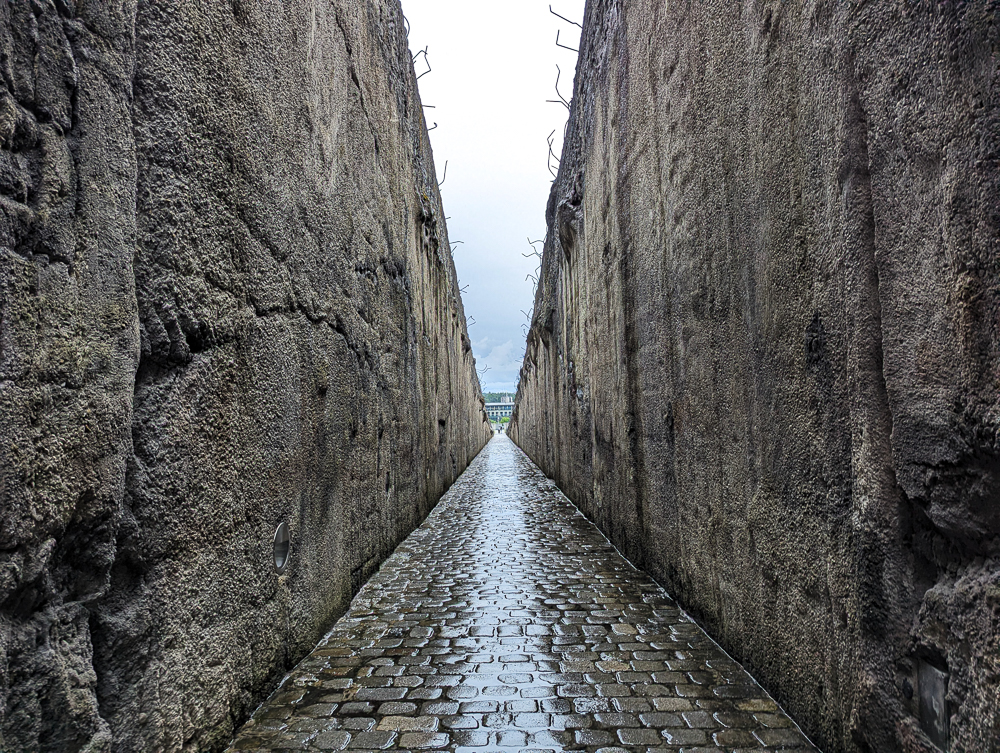
What you’ll see at Belzec extermination camp
Visiting Belzec, you’ll be able to tour the permanent exhibition inside the museum as well as the entire monument and memorial space outside.
Belzec Museum
The permanent exhibition inside the Belzec museum tells the entire history of the camp, what’s known of the victims, and of Operation Reinhard. You’ll find lots of information as well as original artifacts discovered during archaeological research, photographs, and audio-visual presentations. They offer several temporary exhibitions as well.
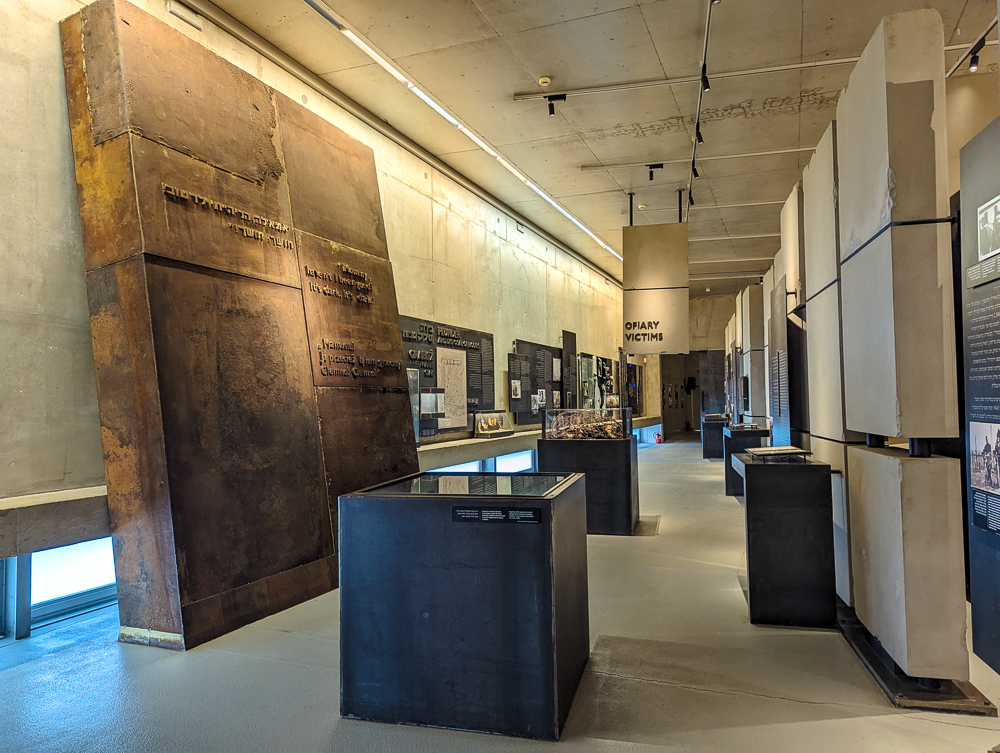
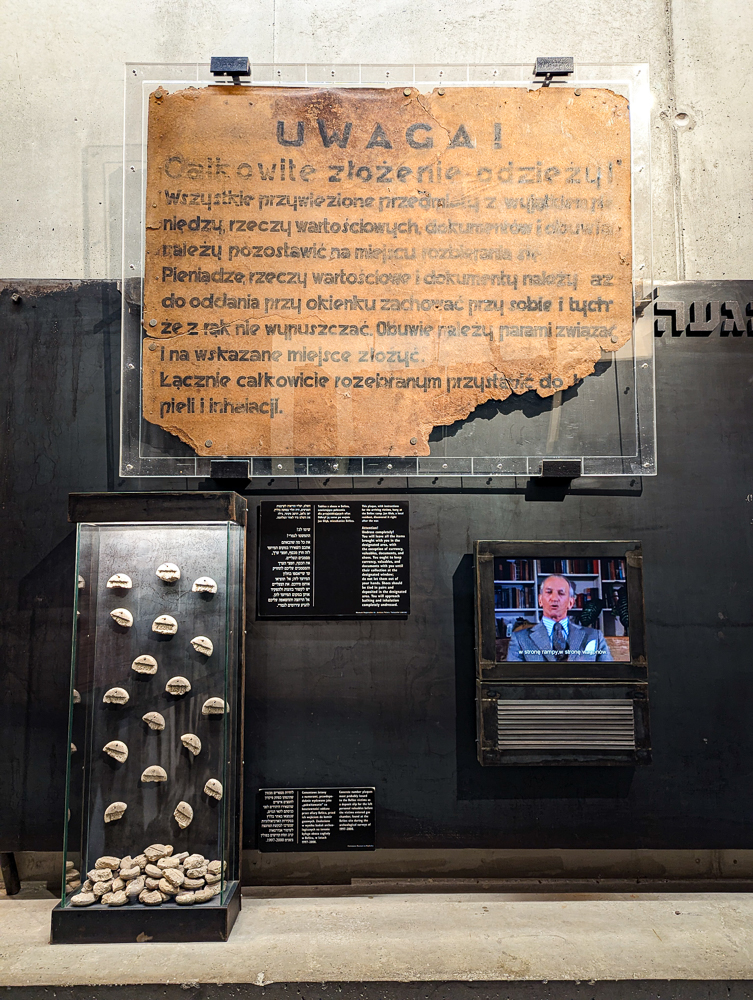
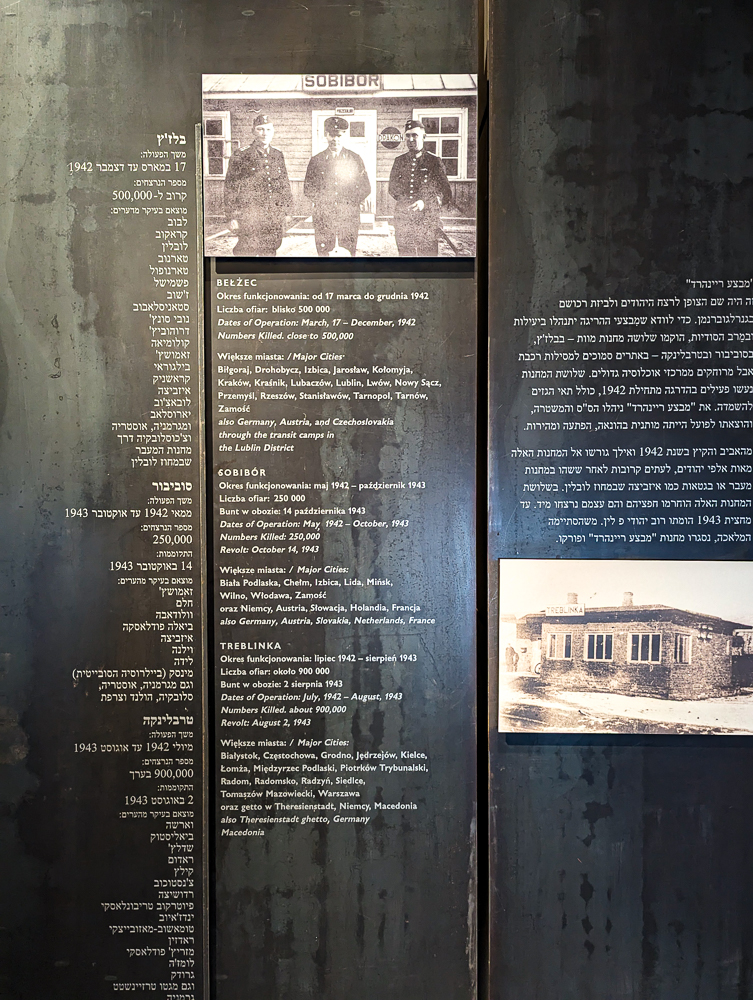
Contemplation Room
At the back of the museum, down a short corridor, is what they call the Contemplation Room. This huge room was built to the specifications of one of the gas chambers to give a you sense of the scale. (I.e., way bigger than I ever imagined.)
It’s almost completely dark in here and so quiet you can hear your own heart beating. That is, until you make any sort of sound which you can hear bouncing around the room from one end to the other and back again. To say it’s eerie in here is a massive understatement.
A small memorial to the hundreds of thousands of Jews killed here sits in the corner under the only light in the room. As you walk towards the back, you get the sense that the sides are closing in and the back wall is actually getting farther away. This room, and how I felt inside it, is what I remember the most about visiting Belzec.
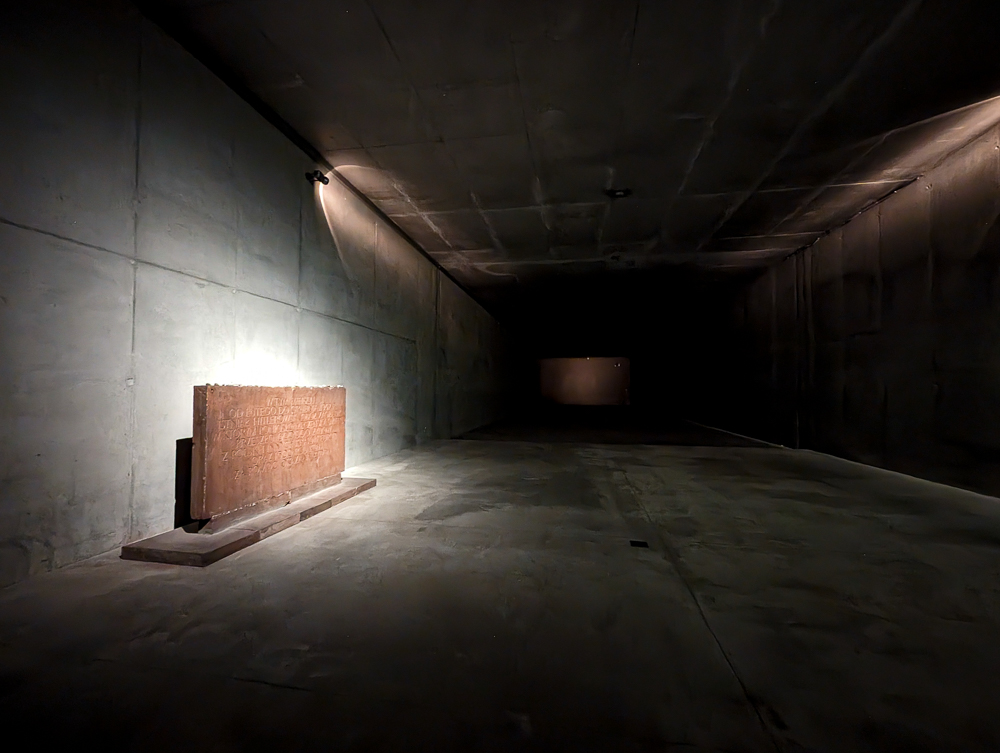
Belzec monument and memorials
Outside the museum you’ll find the massive monument. It’s hard to describe this unique memorial, so hopefully my photos can do much of the talking. Either way, it consists of, essentially, a long trench cut through a vast expanse of rough gray landscape and rocks. Again, an optical illusion.
As you walk down the path, the side walls rise higher and higher above you and the path seems to only get longer. This pathway is lined with twisted rebar and the names of cities from which Jews were deported. It follows the original path the prisoners took down into the gas chamber.
At the back, the memorial is inscribed with several quotes and what look like scratches made by human fingernails. This was the location of the original gas chamber.
Up near the front (close to the entrance and parking area) you can find the Ramp Memorial, made from steel railway tracks. This ties in the importance of the rail lines to the systematic murder that took place here.
This is a most basic explanation of the memorials here because they are quite complex. Check out this article on the design of the Belzec monument to learn more.
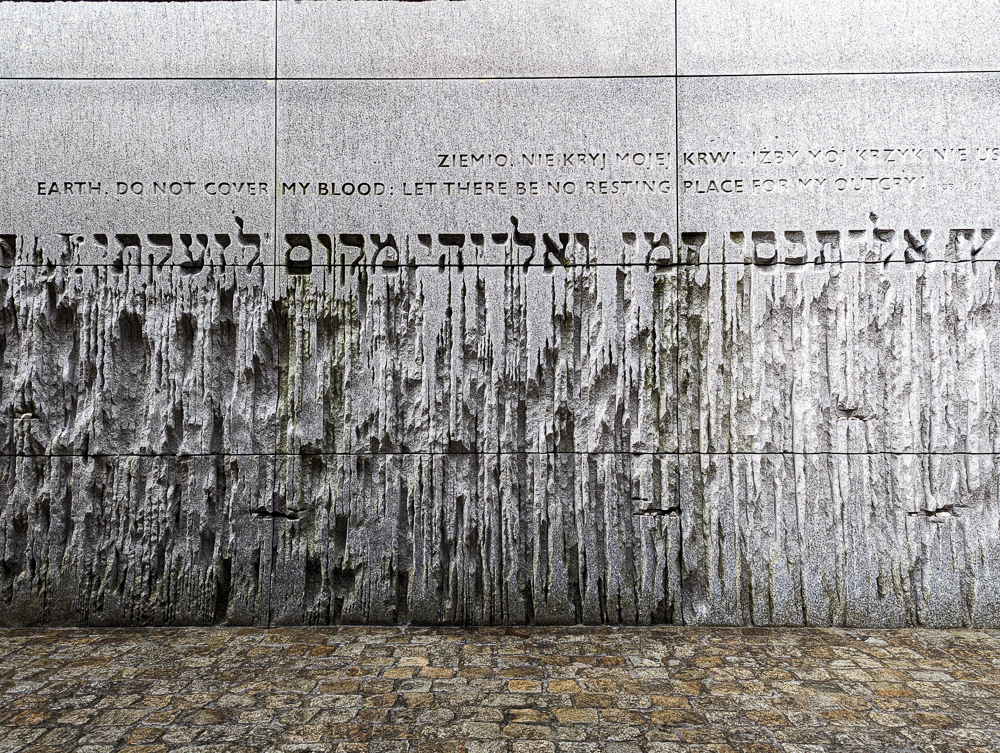
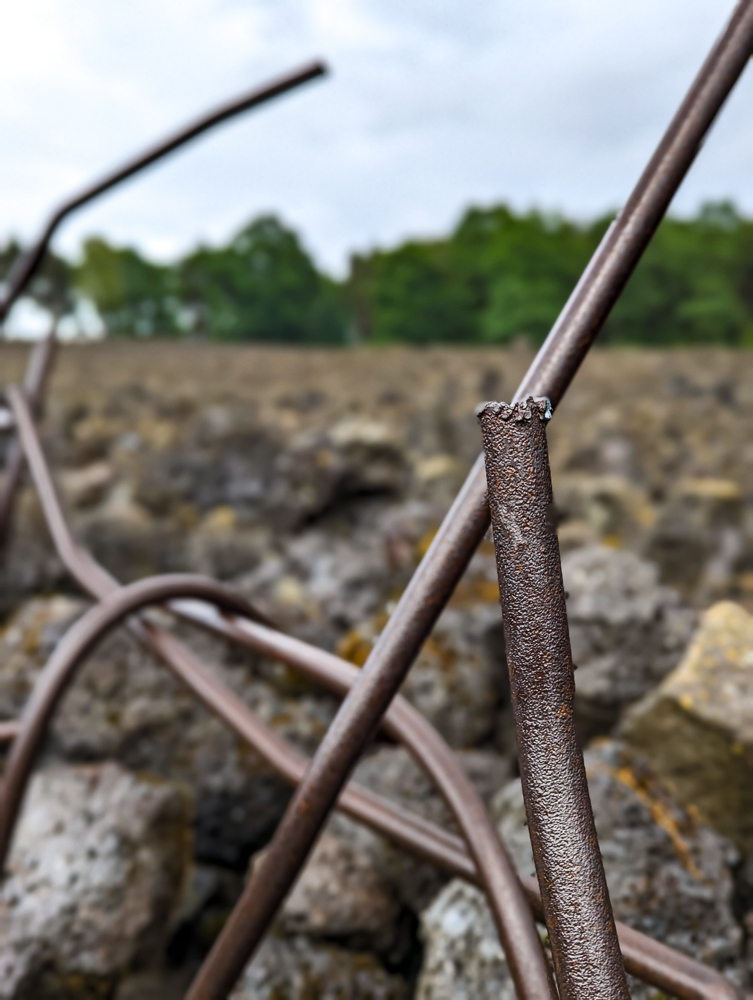
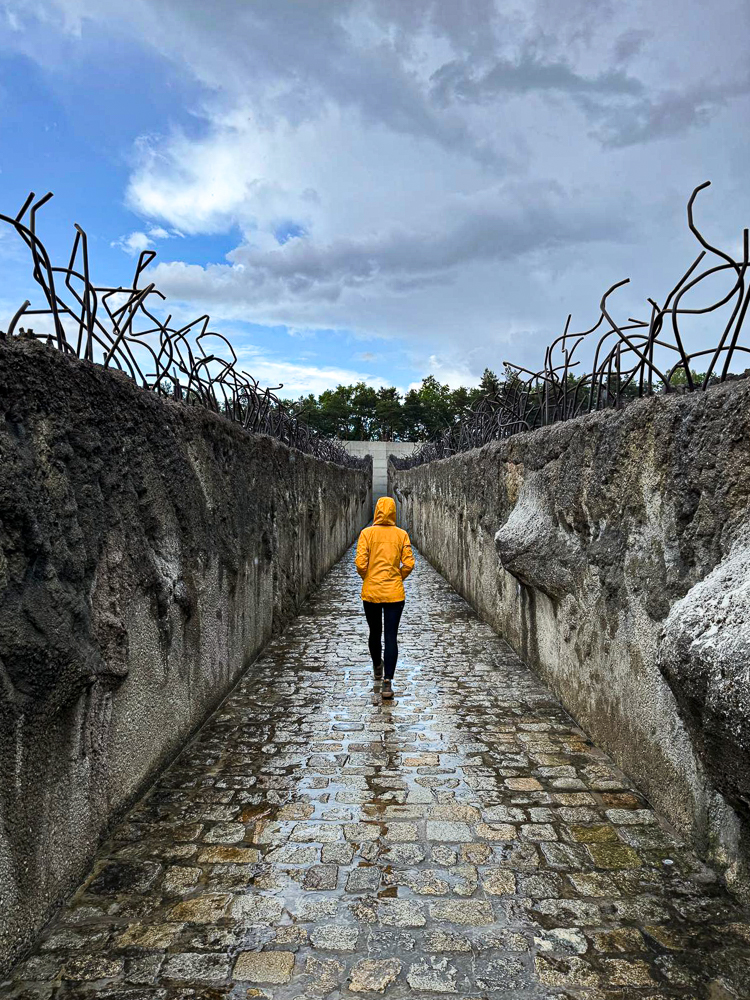
Visiting Belzec: What to expect
When you arrive, check in at the visitor center where they’ll provide you with some information on the site. You can then head into the museum and explore it at your own pace. Before leaving the museum, be sure to spend some time inside the Contemplation Room.
From here, you can exit the museum and head out into the memorial space. Take your time walking through it and examining its many different elements. Be sure to stop by the Ramp Memorial on your way out.
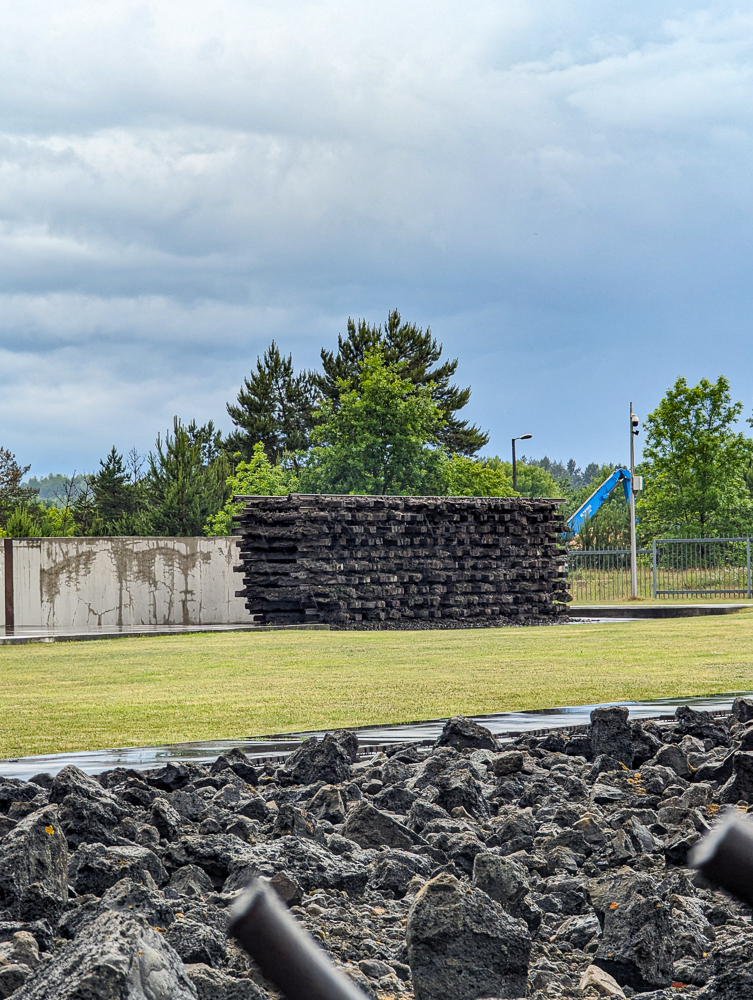
What you need to know for visiting Belzec
If you’ve visited other concentration camp memorial sites, this one may feel a little different. Regardless, here are a few things you should know before you go…
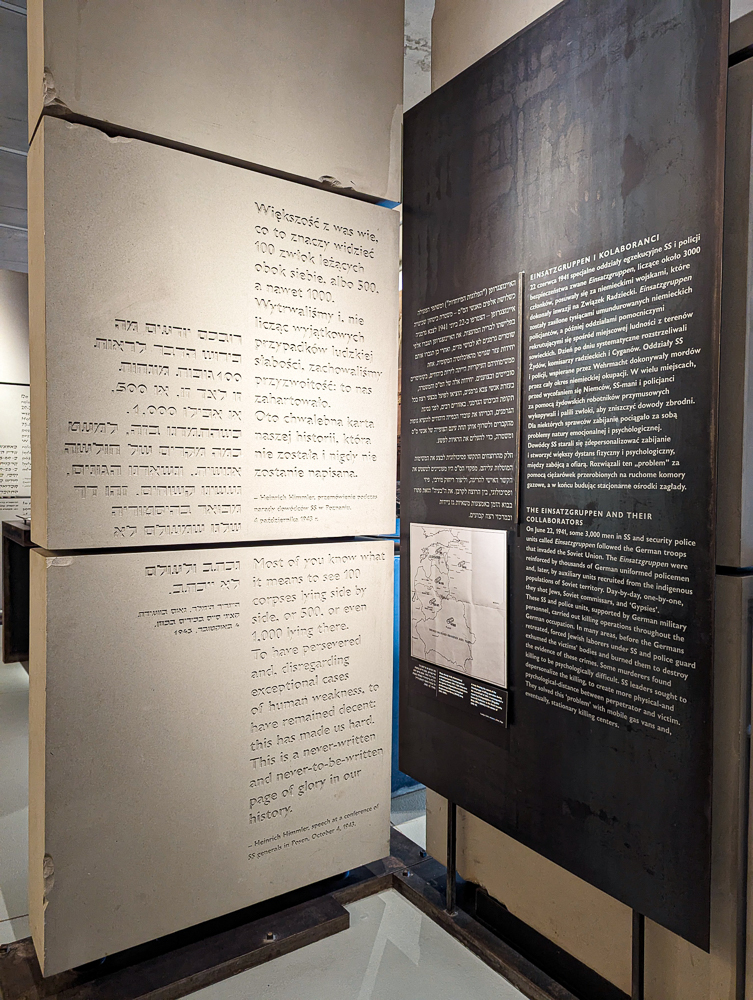
How to act at Belzec
Hopefully you won’t see any inappropriate behavior while visiting Belzec like I’ve seen at other camps and historical sites. Even so, here are a few simple rules to follow yourself while here:
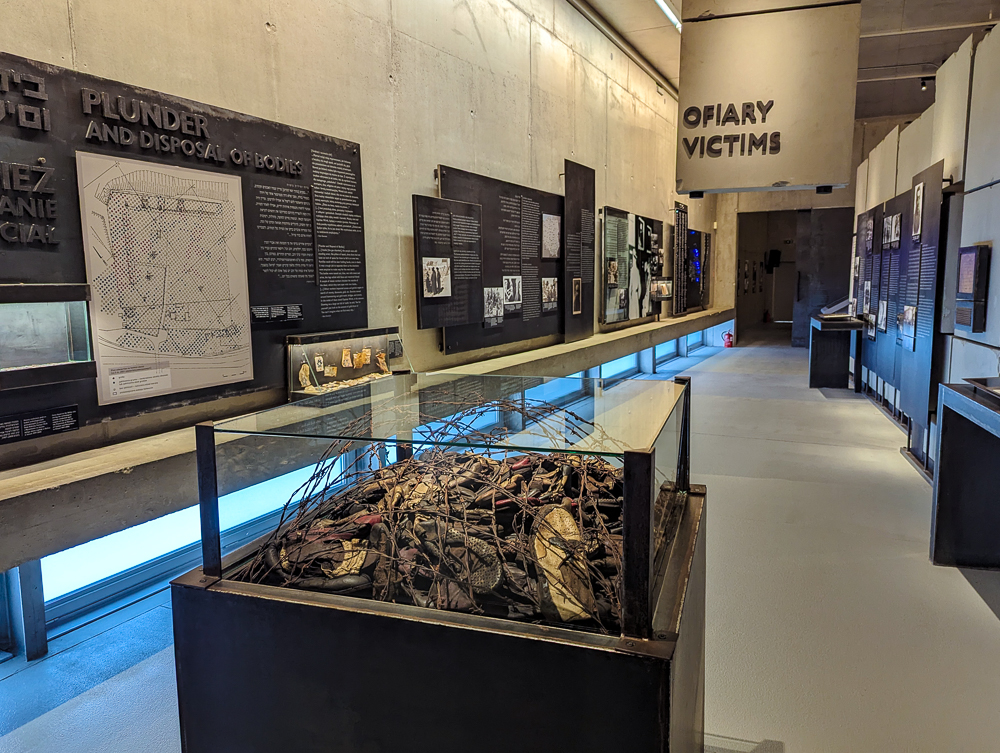
Visiting Belzec: Essential information
Here’s the most basic information you need to plan your trip to Belzec (accurate as of February 2025):
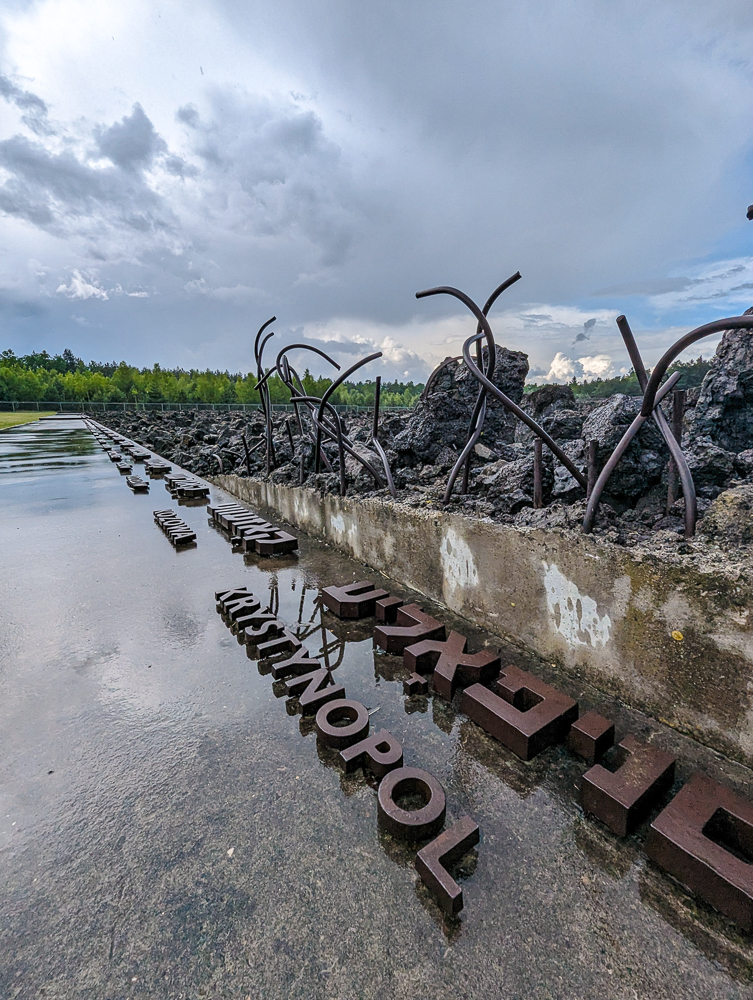
Suggested books for visiting Belzec
Here are a few great books you can read to prepare you for visiting Belzec:
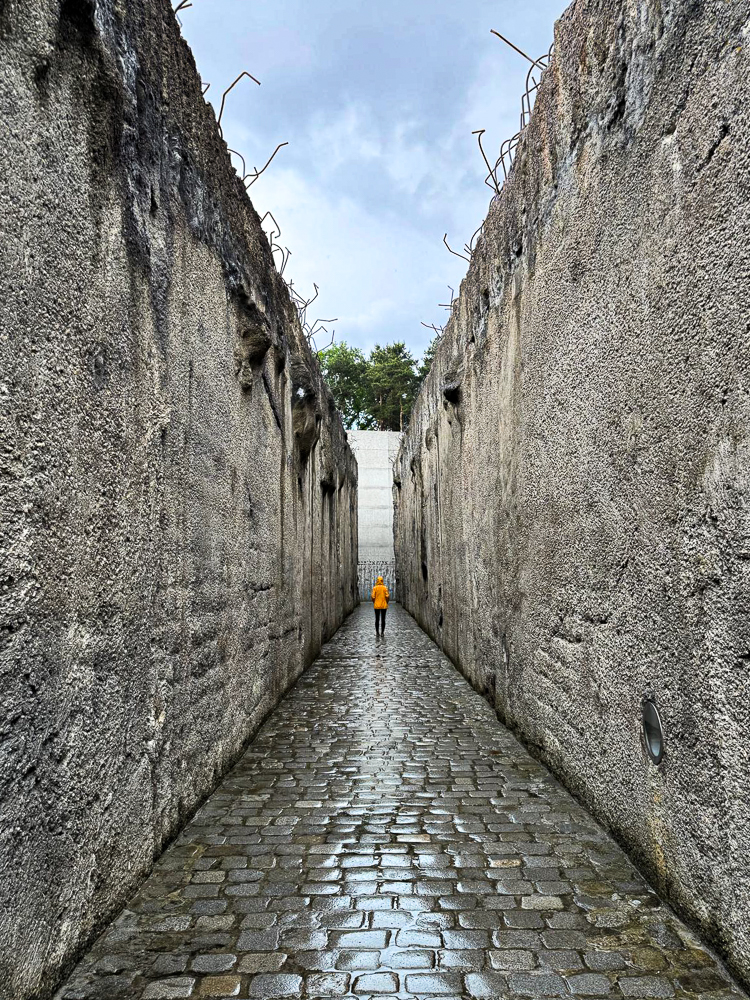
Suggested movies for visiting Belzec
There haven’t been as many movies made about Belzec as, say, Auschwitz, but some of the same movies can still prepare you for a visit here.
For more great books to read and movies to watch before visiting Poland, see my full list in that link.
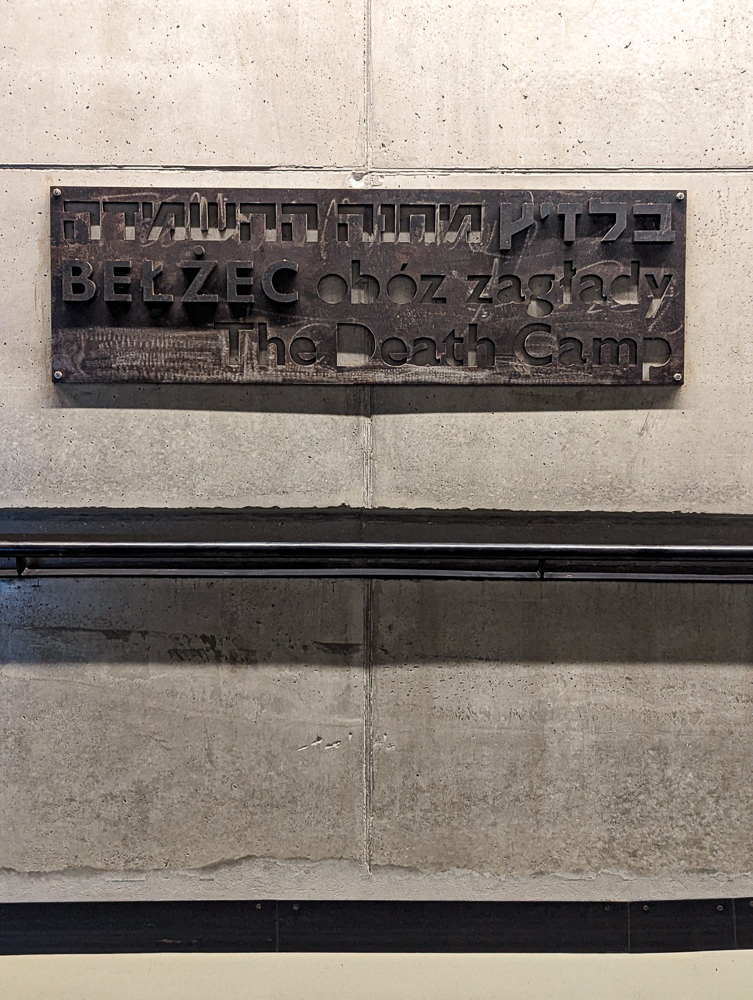
Where to stay in Lublin
Since Lublin is the closest major city for visiting Belzec, I’ll offer a few suggestions on where to begin your hotel search.
There are plenty more to choose from though. See all Lublin hotel options here.
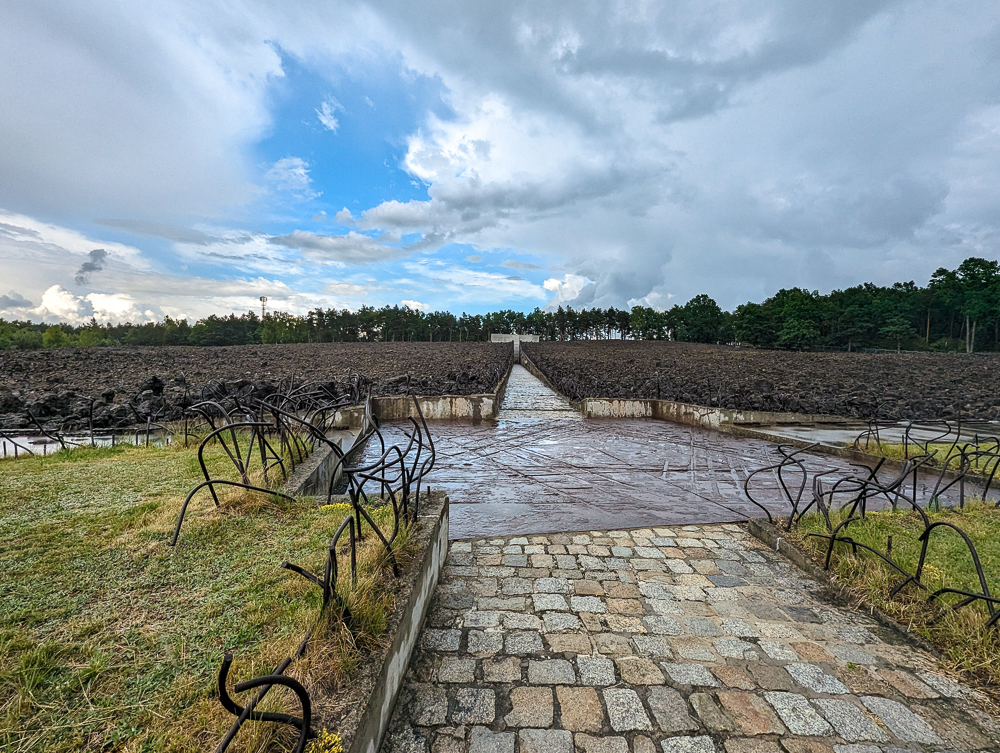
More info for your visit to Poland
- Hotels: Find great places to stay on Booking.com (my go-to). Expedia and Hotels.com are worth checking too. VRBO is best for apartment rentals.
- Rental cars: Check out the best local rental car deals here.
- For more local tours, check out all the options from Viator and Get Your Guide.
- Don’t forget a Poland guidebook and this must-have Poland customs and culture guide!
- Want more? See all my Poland posts here.
Like this post? Have questions about visiting Belzec? Let me know in the comments below. Thanks for reading.

Save this info, pin this image:
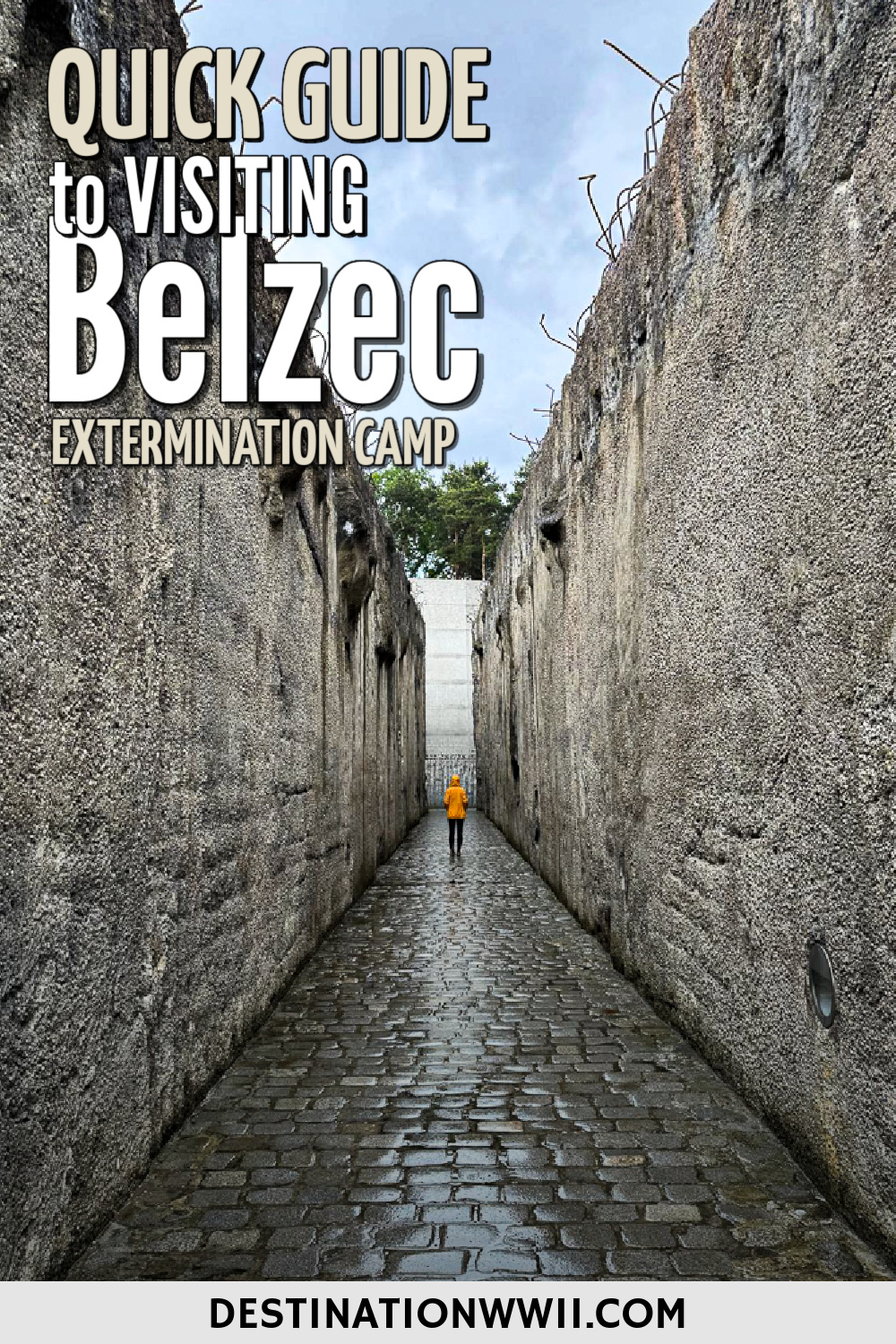

Thanks you Ashley
This was extremely helpful as I am planning a visit this September.
I was originally planning on a Monday but I see (thanks to you) that it is closed on Mondays.
I know there are self tours but I am wondering if I could hire a local expert…maybe I contact the museum?
I will be traveling by car from Rzeszow so I hope the roads are ok.
Once again, thank you
Thanks Charles! They do offer dedicated guides, mostly for groups, but I would definitely reach out to them with your guide questions. Here’s their guide page.